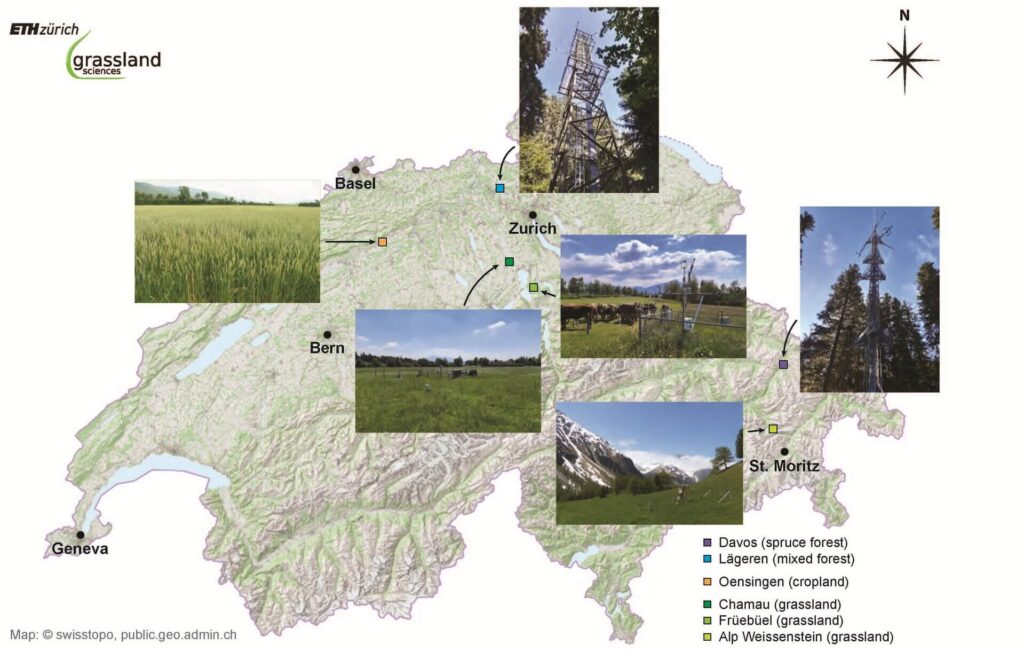About
Context
The Swiss FluxNet combines flux sites in Switzerland where CO2 and H2O vapour fluxes (at some sites also CH4 and N2O fluxes) are measured at ecosystem scale using the eddy-covariance technique. It currently encompasses six long-term ecosystem sites, all run by our group, covering the major land-use types in Switzerland: forest (mixed deciduous: Lägeren; evergreen: Davos), grassland (Chamau, Früebüel, Alp Weissenstein/Crap Alv), and cropland (Oensingen). Flux measurements in an urban setting (Basel) as well as within a watershed (Rietholzbach) complement the Swiss FluxNet. Further sites with short-term measurements such as Dischma (winter measurements over grassland; closed down) and Oensingen (grassland; closed down) provided additional information.

Approach
Ecosystem flux measurements of CO2, H2O vapour, CH4 and N2O are performed with the eddy covariance method. The eddy covariance method is based on high frequency measurements (10–20 Hz) of turbulent fluctuations in vertical wind velocity and the mixing ratio of a trace gas. The ecosystem flux itself is calculated from the covariance between these two measurements using time averaging of typically 30 min.
Technical specifications
Highest-quality infrared gas analyzers (CO2, H2Ov) and laser spectrometers (CH4 and N2O) to resolve turbulent short-term fluctuations in the trace gas mixing ratio Micrometeorology sensors: 3D sonic anemometer for wind speed and directions; radiation sensors for radiation budget Soil climate profiles (temperature, moisture, soil heat flux) Auxiliary instrumentation to measure soil CH4 and N2O fluxes with automated chambers (Davos), soil/stem/leaf respiration, xylem sap flow, stem diameter growth, phenology, leaf area index (LAI), biomass, precipitation, etc.
Last Updated on 20 Dec 2024 22:33
